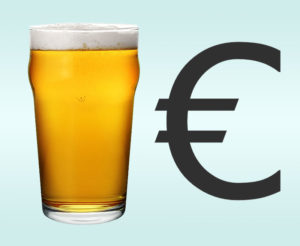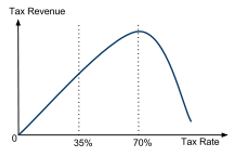 Last week’s piece on tax (or was it on drinking?) certainly created a stir. MMPI finds this somewhat surprising because it has been known for many generations that a wide tax base allows governments to eke out more income. If the tax base is too narrow the tax burden falls on the few and creates a risky over-dependency. In economic terms the relationship between taxation and the resulting levels of tax revenue can be plotted on a graph. The graph plots as a curve known as the Laffer Curve – after Arthur Laffer but the underlying ideas stretch back in time.
Last week’s piece on tax (or was it on drinking?) certainly created a stir. MMPI finds this somewhat surprising because it has been known for many generations that a wide tax base allows governments to eke out more income. If the tax base is too narrow the tax burden falls on the few and creates a risky over-dependency. In economic terms the relationship between taxation and the resulting levels of tax revenue can be plotted on a graph. The graph plots as a curve known as the Laffer Curve – after Arthur Laffer but the underlying ideas stretch back in time.
The Laffer Curve illustrates in very simple fashion the trade off between tax rates and total tax revenues collected by governments. The graph demonstrates that at a tax rate of 0%, governments collect no tax revenue – and similarly collect nothing at a tax rate of 100% because, presumably, nobody wants to work for an after-tax wage of zero, (maybe robots – Ed).
 The Laffer Curve allows Finance Ministers and their minions to calculate how much notional extra revenue can be generated from each 1% increase in taxes. However, this arithmetic calculation also needs to invoke the likely human responses of workers to ever-increasing rates of taxation – hence the downward path of the curve as tax rates exceed what workers might consider the maximum level tolerable. The Laffer Curve also recognises the positive impact that lower tax rates can have on employment and worker productivity.
The Laffer Curve allows Finance Ministers and their minions to calculate how much notional extra revenue can be generated from each 1% increase in taxes. However, this arithmetic calculation also needs to invoke the likely human responses of workers to ever-increasing rates of taxation – hence the downward path of the curve as tax rates exceed what workers might consider the maximum level tolerable. The Laffer Curve also recognises the positive impact that lower tax rates can have on employment and worker productivity.
The responses of ordinary citizens to tax rates are well documented and the balance of acceptance is influenced by how the taxes are spent and how the rewards/benefits resulting from the taxes are distributed. Shifts in tax policy often produce surprising results. When the Irish government reduced the rate of capital gains tax from 40% to 20% it released a swell of pent-up holdings and produced a massive increase in tax revenues. Finance Minister McCreevy correctly guessed that the 40% rate was viewed by taxpayers as too high and that the move lower would be seen as more reasonable. The release valve not only increased tax revenues it also generated economic activity as long-held assets changed hands.
The Laffer Curve does not imply that the arithmetic calculation of tax movements will always elicit increased economic activity as witnessed by Ireland but it does show that all reductions in the tax rate will result in a smaller loss of revenue than might be otherwise expected.
Given the power of the Laffer Curve it is tempting to imagine decisions on taxation being made, not by Finance Ministers, but by sociologists and others qualified in human behaviour. Decisions on interest rates, another fundamental driver of economic activity, were once in the domain of Finance Ministers but are now the responsibility of autonomous Central Bank governors. Could it be that one day we will see tax rates being set by somebody independent of the ruling party? Arthur Laffer’s graph certainly demands such an important change!

